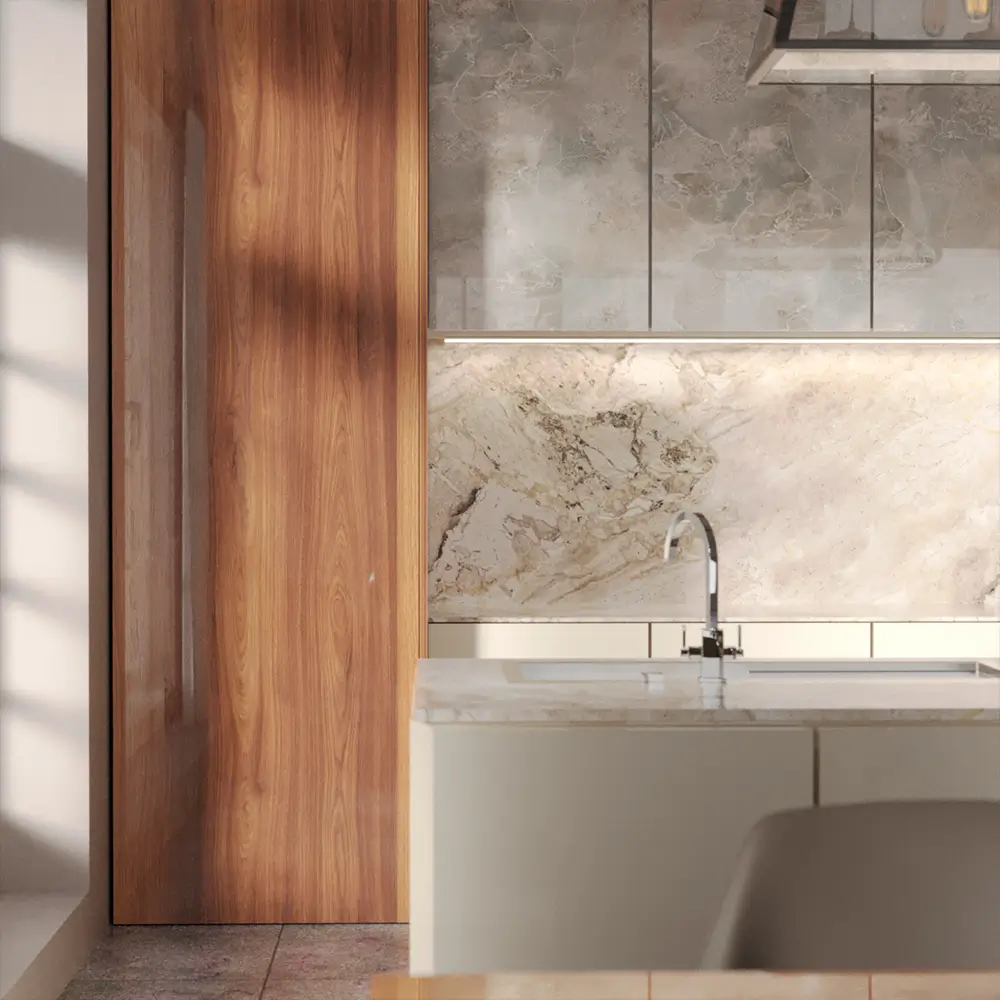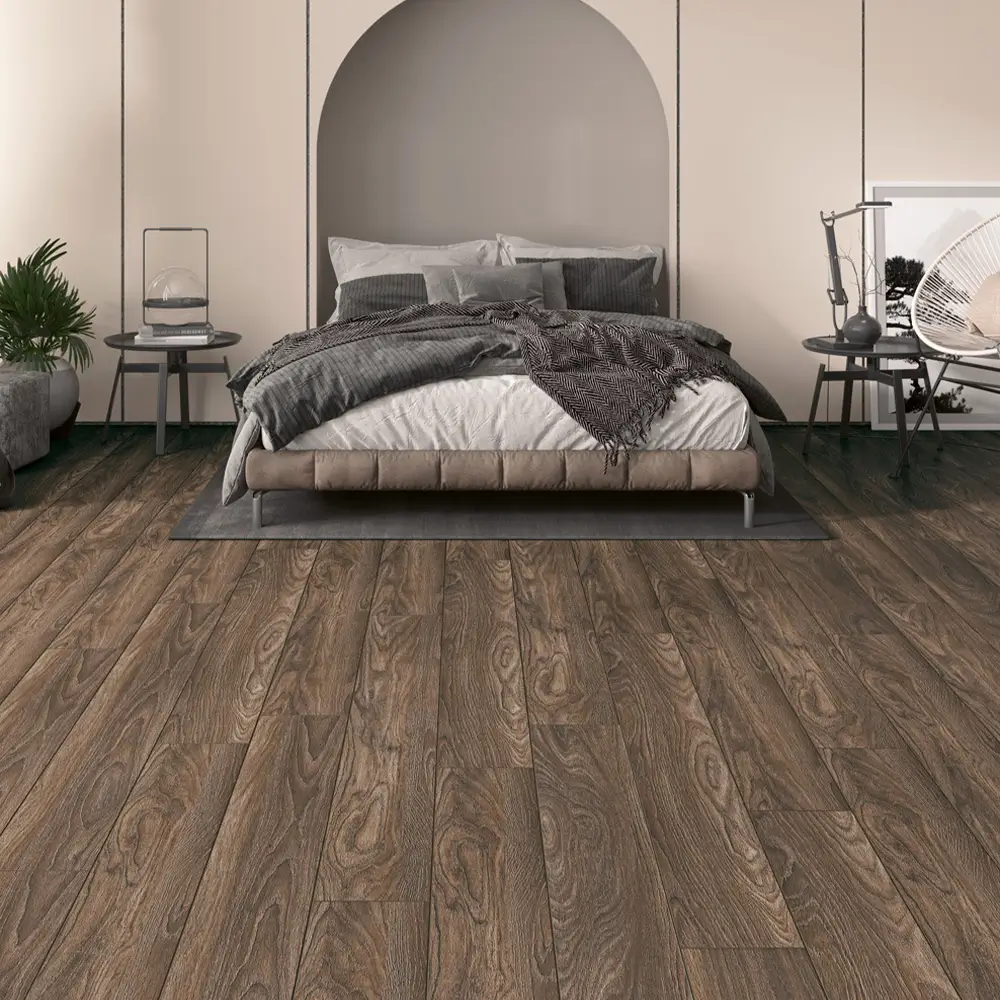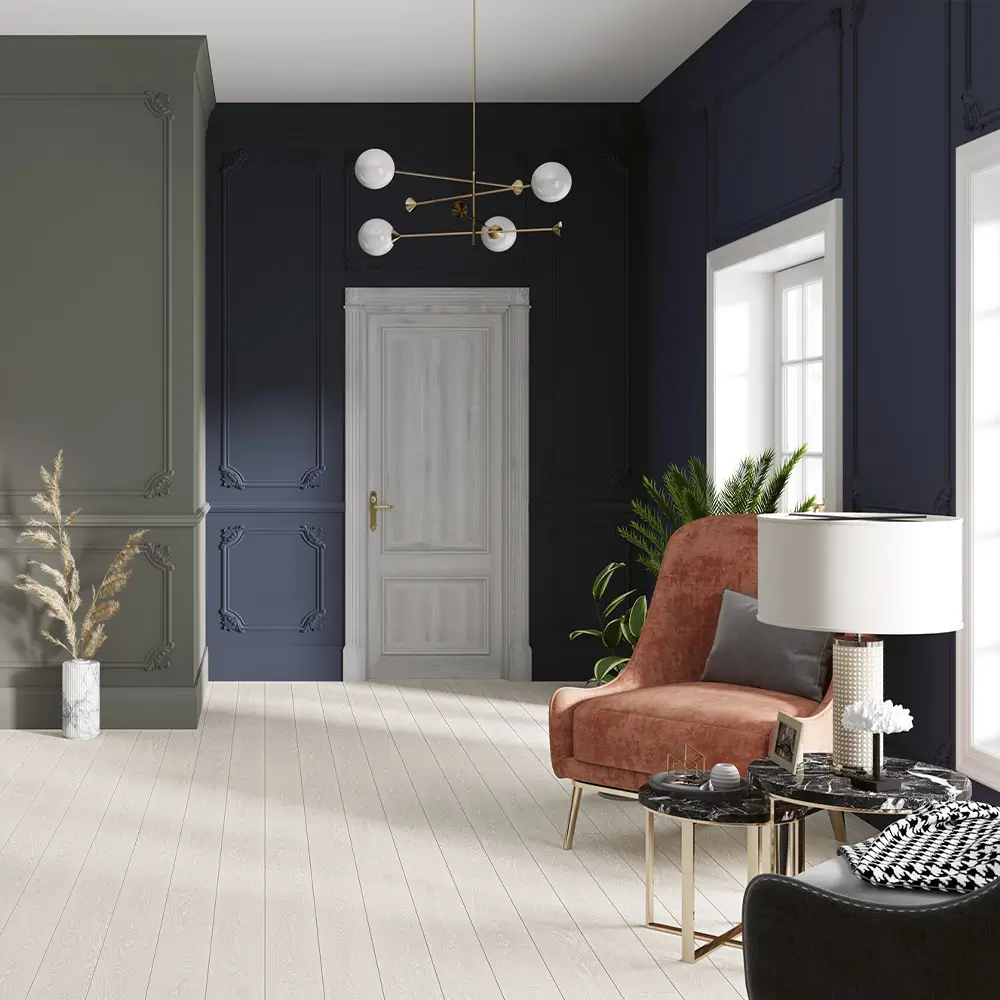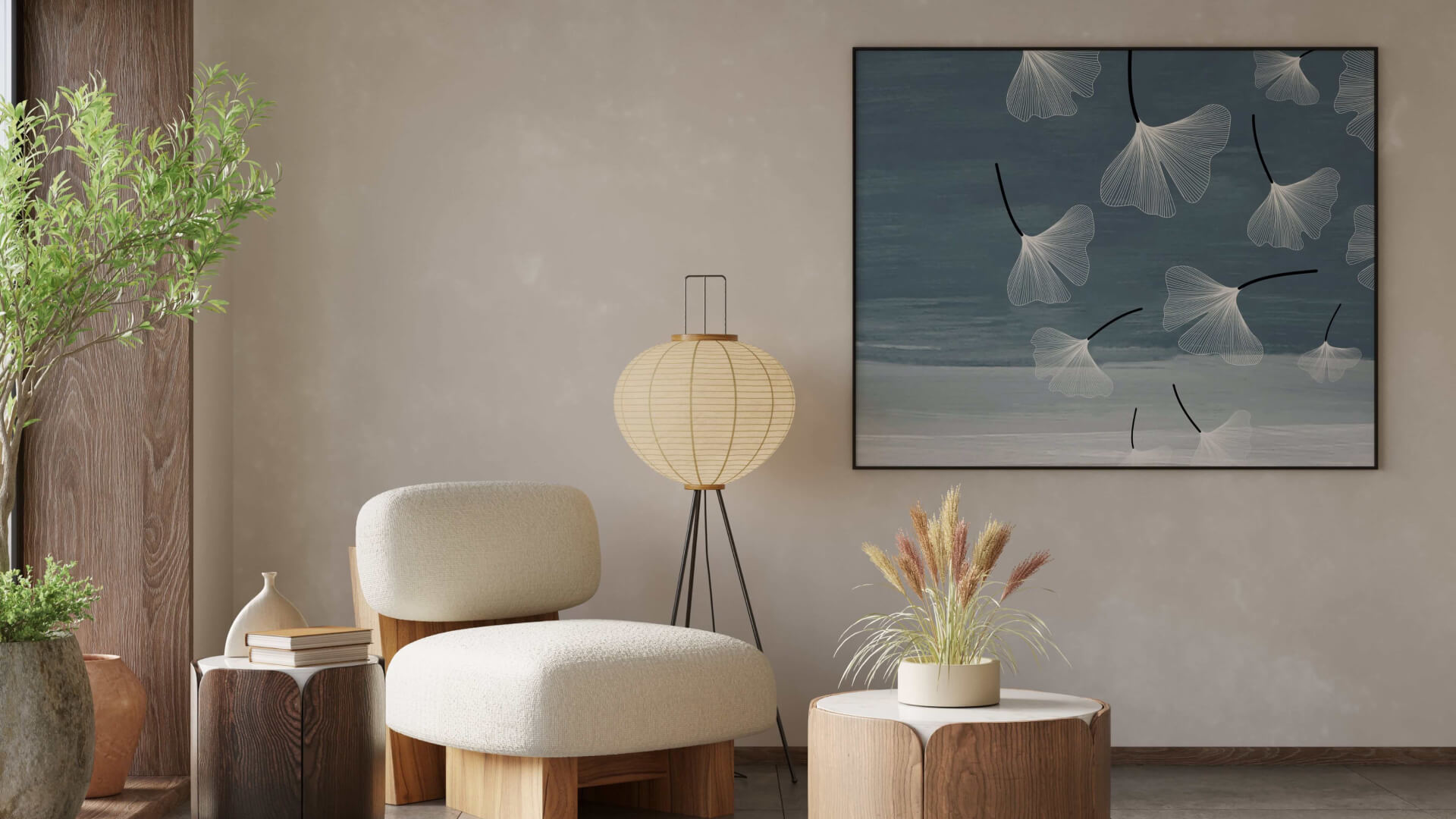
Category
inspiring ideas
inspiring ideas
In Japandi spaces, a minimalist, light-filled space with a natural, quiet and earthy color palette welcomes you. In spaces where you can watch the sunset or sunrise and embrace the landscape as it is, full-length windows, glass walls and space-saving sliding doors are used. The furniture should be low, but asymmetry can be tried with one or two high pieces of furniture to break the monotony of the layout. When installing a wooden floor, cooler pastel colors are used in combination with neutral colors on the walls. Then some fabric textures are added to make the space more intimate, such as linen cushions in plain colors and shaggy rugs. A table in neutral colors or a beautiful plant is chosen to be the focal point.
Japandi is a word derived from the combination of the words Japanese and Scandinavian. Both cultures have very similar aesthetics and design in the sense that functionality is based on minimalism, which celebrates the beauty of a calm and serene life. This fusion ranges from the Japanese aesthetic of Wabi Sabi which finds transitions and imperfections beautiful, to the Scandinavian sense of Hygge, which means contentment in a warm and cozy environment.
Neutral color palette and perfect balance
There are traces of both cultures in the color palette. A warm and neutral color palette is the backdrop for every Japanese-style interior. Unlike Scandinavia, there is a predominance of muted colors and natural tones such as white, brown and beige. Gray and black are used to create a more dramatic mood, but not overwhelmingly so. This style provides the perfect balance between the bright and cold color scheme of the Scandinavian style and the warm and natural colors of the Japanese. Pastel pinks, blues and cooler shades of green are brought together warmed by earthy details and wooden elements. The carefully selected furniture is very close to the "earth", simple and minimalist, as in Japanese philosophy, which questions the relationship between the earth and man.
Complementary accessories, mostly plants, glassware, books and handmade ceramics, complete this line. In Japandi houses, a single large abstract painting or a natural landscape is sufficient to harmoniously decorate the space. The Wabi Sabi worldview is based on a love for the natural and the handmade and for the "imperfect" rather than the perfect. Traditional Japanese accessories such as high-quality furniture made from simple and natural materials such as textured wood in medium tones, handmade wallpaper, Shibori dyed fabrics, handmade ceramics and textured paper lamps can accompany this theme. Plants are a must for Japandi interiors, but the main goal should be to create a bold simplicity with one or a few plants, rather than creating a jungle greenery inside the house.
Simple but inviting
Can simple and serene spaces also be inviting? Achieving this balance is not easy, but the Japandi movement is the key to creating such interiors. Although natural and muted colors are chosen, it is possible to achieve an interesting look with a mixture of different textures and materials. All elements of Scandinavian and Japanese styles, such as rough textured surfaces or recycled materials, reclaimed handmade pieces, can be mixed and matched in different combinations.
Design Tips
- Wood, a living material that makes you feel the beauty of nature, also strengthens the Japandi line.
- Raw-looking oak beams, windows with wooden sills that let the view in, sliding doors, wooden bookshelves offer typical design solutions.
- Vintage pieces that glorify craft and craftsmanship bring the spirit of Japandi to spaces.
- In the traditional Japanese wood preservation method "Shou Sugi Ban" (yakisugi), materials such as blackened oak and teak with moire and dark stains should be highlighted.
- At the core of Japandi philosophy is the Japanese concept of "Aimai", which describes uncertainty. So there is no room for sharp distinctions between inside and outside.
- In landscape designs, create seamless indoor-outdoor transitions that reflect Zen serenity.
- You can create special areas such as terrace gardens, rock gardens, vegetable gardens and outdoor dining corners.
- Tall plants with elegant foliage and a simple form in a harmonious pot
should be preferred.
- Japanese garden plants such as bamboo, maple and bonsai can be used in combination with small boulders and stones that symbolize mountains.
- Motivational retreats, part of the Zen movement, become yoga studios in Japandi homes and private spaces that demand extra privacy.
Bauhaus School and Today's Understanding of Design


